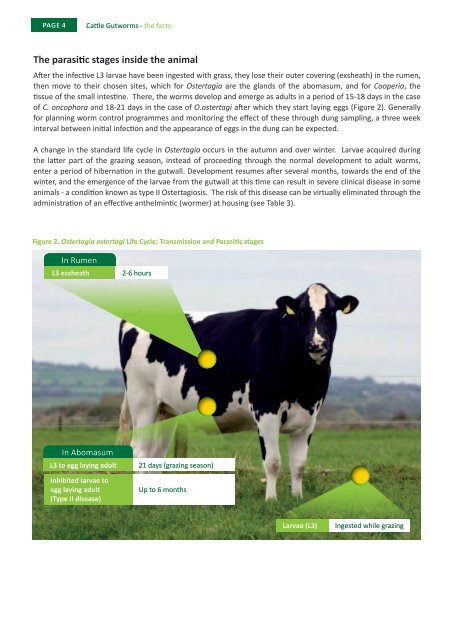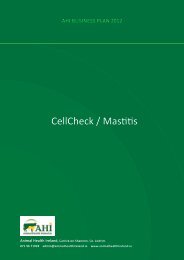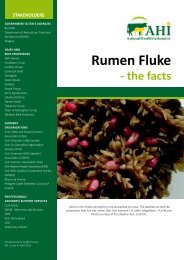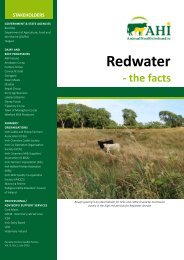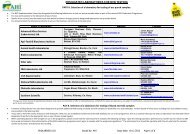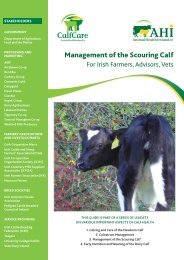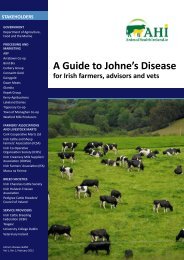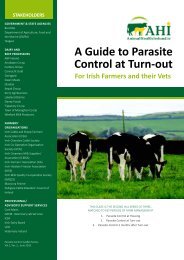Cattle Gutworms - Animal Health Ireland
Cattle Gutworms - Animal Health Ireland
Cattle Gutworms - Animal Health Ireland
You also want an ePaper? Increase the reach of your titles
YUMPU automatically turns print PDFs into web optimized ePapers that Google loves.
PaGe 4 <strong>Cattle</strong> <strong>Gutworms</strong> - the facts<br />
the parasitic stages inside the animal<br />
After the infective L3 larvae have been ingested with grass, they lose their outer covering (exsheath) in the rumen,<br />
then move to their chosen sites, which for Ostertagia are the glands of the abomasum, and for Cooperia, the<br />
tissue of the small intestine. There, the worms develop and emerge as adults in a period of 15-18 days in the case<br />
of C. oncophora and 18-21 days in the case of O.ostertagi after which they start laying eggs (Figure 2). Generally<br />
for planning worm control programmes and monitoring the effect of these through dung sampling, a three week<br />
interval between initial infection and the appearance of eggs in the dung can be expected.<br />
A change in the standard life cycle in Ostertagia occurs in the autumn and over winter. Larvae acquired during<br />
the latter part of the grazing season, instead of proceeding through the normal development to adult worms,<br />
enter a period of hibernation in the gutwall. Development resumes after several months, towards the end of the<br />
winter, and the emergence of the larvae from the gutwall at this time can result in severe clinical disease in some<br />
animals - a condition known as type II Ostertagiosis. The risk of this disease can be virtually eliminated through the<br />
administration of an effective anthelmintic (wormer) at housing (see Table 3).<br />
figure 2. Ostertagia ostertagi life Cycle; transmission and Parasitic stages<br />
In Rumen<br />
l3 exsheath<br />
In Abomasum<br />
l3 to egg laying adult<br />
inhibited larvae to<br />
egg laying adult<br />
(type ii disease)<br />
2-6 hours<br />
21 days (grazing season)<br />
Up to 6 months<br />
larvae (l3) Ingested while grazing


